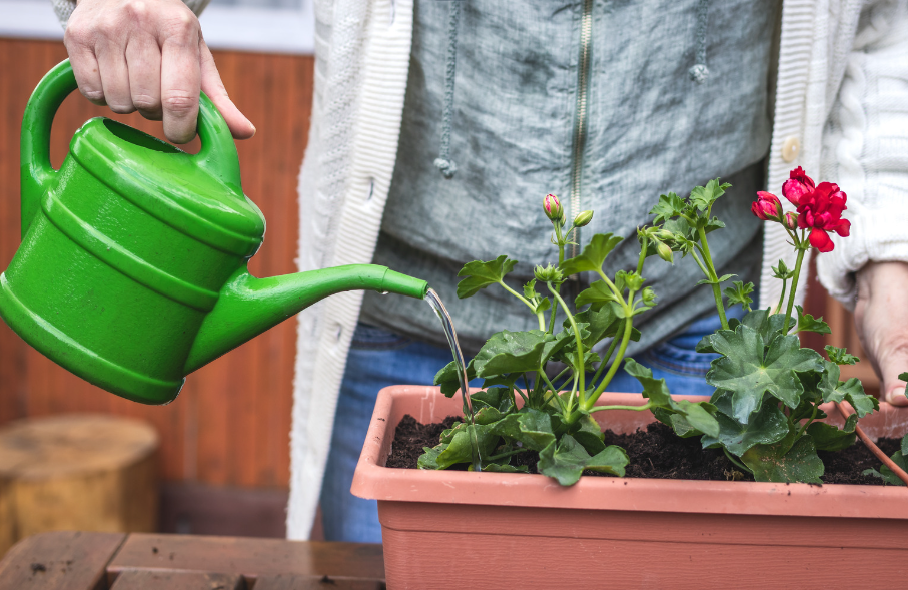Watering pelargoniums correctly is crucial for their health and vibrant growth. Here are some guidelines to help you water them properly:
General Guidelines
- Check Soil Moisture:
- Always check the soil moisture before watering. Stick your finger about an inch into the soil. If it feels dry at that depth, it’s time to water.
- Watering Frequency:
- During the Growing Season (Spring and Summer): Water pelargoniums thoroughly but allow the soil to dry out between waterings. Typically, this means watering once a week, but frequency can vary depending on climate and soil conditions.
- During Dormant Period (Autumn and Winter): Reduce watering significantly. Allow the soil to dry out more between waterings, typically every 2-3 weeks.
- Watering Method:
- Top Watering: Water the soil directly at the base of the plant rather than overhead to avoid wetting the leaves, which can lead to fungal diseases. This is one of the reasons why we choose to hand water all our Pelargoniums here on the nursery.
- Bottom Watering: Place the pot in a shallow tray of water and let the soil absorb moisture through the drainage holes. Remove the pot from the tray after about 20-30 minutes to prevent root rot.
Specific Tips
- Container vs. Ground:
- Containers: Ensure pots have drainage holes to prevent waterlogging. Use well-draining potting soil.
- Ground: If planted in the ground, ensure the soil is well-draining. Raised beds can help improve drainage.
- Climate Considerations:
- Hot and Dry Climates: You may need to water more frequently. Mulching can help retain soil moisture.
- Humid Climates: Less frequent watering is needed. Be cautious of overwatering.
- Water Quality:
- Use room temperature water if possible. Cold water can shock the roots.
- If possible, use rainwater or distilled water, as tap water with high mineral content can sometimes cause leaf spots.
- Signs of Overwatering and Underwatering:
- Overwatering: Yellowing leaves, mushy stems, and root rot are signs of overwatering.
- Underwatering: Wilting, dry, and crispy leaves are signs of underwatering.
- Water in the Morning:
- Watering in the morning allows the plant to take up moisture before the heat of the day and reduces the risk of fungal diseases.
By following these guidelines, you can ensure that your pelargoniums receive the right amount of water for healthy growth and flowering. We would recommend using a Tomato or Seaweed feed every other watering throughout the summer months. Feeding once a month will suffice through the winter period.
Don't forget to read our blog on watering sustainably!

